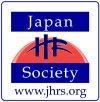By Chad Stewart, chief advocate, Green HR (a JHRS advocacy)
The “environment agenda” seems to be a popular cause nowadays. In fact, the environment was one of the top agenda items in the recently concluded G8 Summit in Italy. In business, we are seeing that more and more companies are getting on the environment bandwagon with the use of terms such as SD (sustainable development), EM (environmental management), LCF (low carbon footprints), and popularity of “green” or “eco-“ prefixes such as "green business," "green products," "green processes and systems," "Eco-tourism," "Eco-cars," etc.
By now, it is a widely-accepted notion that in order to survive and thrive in the current business environment driven by globalization, aging workforce, climate change and sophisticated customers, organizations must continually improve performance. This includes, amongst others:
* Increasing revenue by delivering enhanced value to customers;
* Reducing costs and increasing return on sales by improving systems and processes and ensuring that your people communicate, collaborate and coordinate rather work in silos;
* Planning and acting strategically and “sustainably” rather than waiting for government regulations and competitor adaptation to force you to suddenly catch up to what “everyone else is doing”; and,
* Building a workforce that is pro-active and takes accountability for improving the organization, its results, and its value proposition to customers rather than waiting for top managers to tell them what to do
But as a profession, how can HR contribute to this goal? In the first place, can HR become part of the environment solution? We believe HR can. And we can even build a business case for what we aptly call “Green HR.”
Taking a “green” approach to “HR” is one way to ensure that these key success factors are embedded in your organization. By “HR” we mean the entire HR value chain from recruiting, to retaining, to releasing.
By “green” we mean the “triple bottom line” at the level of “abundance” rather than “scarcity” which means measuring and managing your organization’s performance in three key areas:
1. Profit (the financial prosperity of the organization, its members and its community);
2. People (developing and rewarding people so they continually work to increase value to the organization and its community);
3. Place (the geographic scope to which your organization provides the value that generates its profit).
When we take a “scarcity approach,” we focus on securing our own profit, people and place, often at the expense of others -- especially during times of difficulty and contraction. It also means that we focus on reducing the use of existing and future resources and creating systems to allocate those resources as much as we can.
On the other hand, when we take an “abundance approach,” we focus on creating more prosperity for the people and places with whom we engage in any market conditions. This requires that we work together beyond collaboration to cohere new systems and structures, create new resources and processes, see our needs differently, and engage in constellations of organizations that create more value than any of us can create alone.
From this perspective, “Green HR” improves organizational performance because workers who can explicitly think and act to create triple-bottom-line abundance also create cohesive, agile organizations fast enough to overcome crises, manage risks and seize opportunities in the current business environment. Triple bottom line abundance must be embedded in the organizational DNA at the individual, team and divisional levels rather than preached down by top management.
To best of these illustrate the business case for Green HR. In the next three parts of this series, we’ll present brief summaries of case studies to take a look at how small, medium and large companies have improved their organizational performance and profitability before and during the current economic downturn using Green HR. Our intention is that through these, you will see how HR and sustainable development can drive your business success.
Stay tuned.
Blog:
Other posts by The Japan HR Society:







